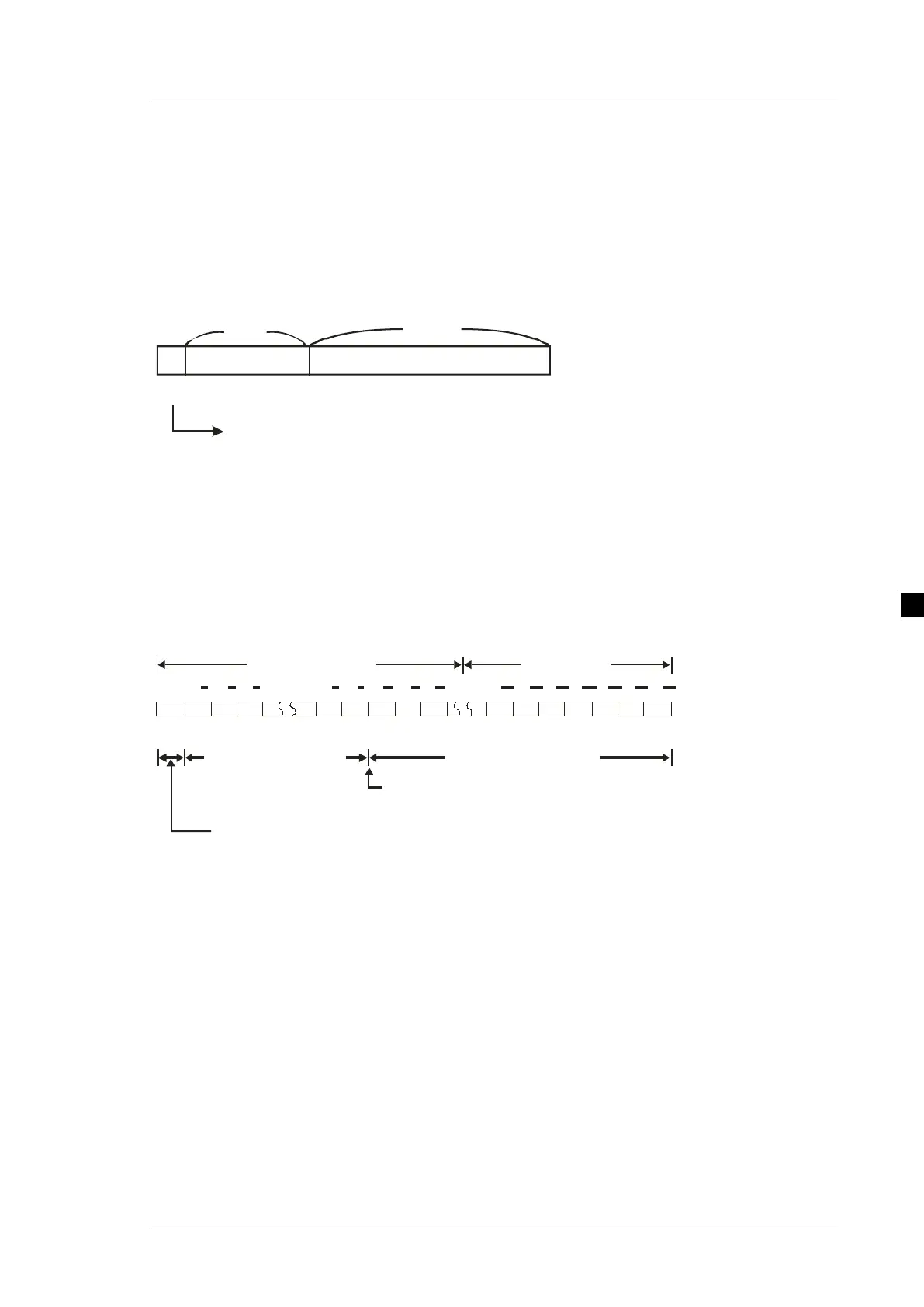Chapter 5 Device
5-9
5.2.2 Floating-point Numbers
The floating-point numbers are represented by decimal points in ISPSoft. For example, the floating-point number
of 500 is 500.0. Refer to Section 2.2.2 in the AS Series Programming Manual for more information.
5.2.2.1 Single-precision Floating-point Numbers
Floating-point numbers are represented by the 32-bit register. The representation adopts the IEEE754 standard,
and the format is as follows.
S
Exponent
Mantissa
8-bit 23-bit
b
31
b
0
Sign bit
0: Positive
1: Negative
Equation:
The single-precision floating-point numbers range from ±2-126 to ±2+128, and correspond to the range from
±1.1755×10-38 to ±3.4028×10+38.
The AS series PLC uses two consecutive registers to form a 32-bit floating-point number. Take (D1, D0) for
example.
S E7 E6 E5 E1 E0 A22 A21 A20 A6 A5 A4 A3 A2 A1 A0
b0b1b2b3b4b5b6b20b21b22b23b24b28b29b30b31
2 2 2 2 2 2 2 2 2 2 2 2 22 2
D1(b15~b0) D0(b15~b0)
Exponent (8 bits)
Mantissa (23bits)
Mantissa sign bit (0: Positive; 1: Negative)
When b0~b31 are zeros, the content is zero.
The position where the decimal point is hidden
Example 1:
23 is represented by a single-precision floating-point number.
Step 1: Convert 23 into the binary number, i.e. 23.0=10111.
Step 2: Normalize the binary number, i.e. 10111=1.0111 ×24 (0111 is the mantissa, and 4 is the exponent.).
Step 3: Get the value of the exponent.
∵ E-B=4→E-127=4 ∴ E=131=100000112
Step 4: Combine the sign bit, the exponent, and the mantissa to form the floating-point number.
0 10000011 01110000000000000000000
2
=41B80000
16

